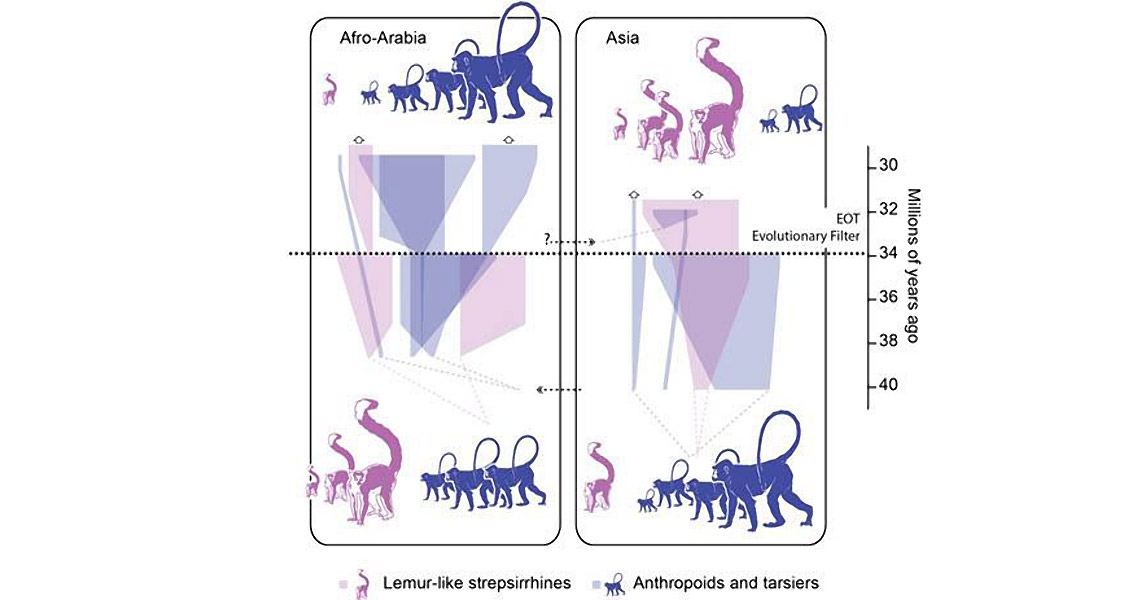<![CDATA[Approximately 34 million years ago the Eocene-Oligocene transition (EOT) saw extreme climatic deterioration bring about profound faunal and environmental changes to the Asian continent. Given that primates are more environmentally sensitive than any other mammal, reconstructing their response to the EOT has been particularly difficult because of the scant record left by the Oligocene primates. A new study by Dr. NI Xijun, from the Institute of Vertebrate Paleontology and Paleoanthropology (IVPP) with the Chinese Academy of Sciences, along with his team has reported finding a diverse source of primate fauna in southern China, dating from the early Oligocene. The study provides a better understanding of a critical stage in primate evolution. The primate ancestry (called anthropoids) which led to monkeys, apes and eventually people, originated on the Asian continent; their earliest fossils have been dated to 45 million years ago. It was around 38 million years ago that some of these anthropoids migrated to Africa. Humans then arose from the African continent around 200,000 years ago. Afro-Arabian and Asian primate faunas reacted differently to the EOT deteriorating climate, indicating that the event functioned as a pivotal evolutionary filter which subsequently affected the course of the evolution of primates across the globe. These newly discovered primate fossils were collected from the Lijiawa fossil site in the Yuezhou Basin, in China’s Yunnan Province. The fossil site has yielded over 10 mammal taxa indicative of an early Oligocene age. Researchers have described 10 primates which were previously unknown, from fossil teeth and jaws along with a few other bones, all helping to fill in the evolutionary record of Asian primates. The reason so many Oligocene primates were found at this particular site is due to its location - far enough south to remain sufficiently warm and dry for primates to survive. Like many of today's primates, the Oligocene primates dwelled in tropical trees. Distinct cooling marked the transition from the Eocene to the Oligocene periods, this change resulting in a reduction of primates globally. By comparing the composition of primate faunas from the early Oligocene to those of later Eocene primate faunas, researchers found that surviving the EOT required a high degree of ecological and taxonomic selectivity. Prior to the temperature drop, anthropoids dominated the primates of Asia. Afterward, lemur-like primates dominated while the monkey-like primates were decimated. The EOT may be why apes and people emerged in Africa, although anthropoids first appeared in Asia. When the event virtually wiped-out the Asian anthropoids, the only place they could evolve to become humans was Africa. The dynamic changes to the physical environment of Asia during the span of the EOT included the Paratethys Sea retreating in Central Asia, the continued tectonic lifting in the Tibetan-Himalayan region and the South China Sea opening. Although Africa was not immune to these global changes during the EOT, it didn’t experience the dramatic paleogeographic and tectonic alterations seen in Asia. The study was recently published in Science. Image courtesy of Ni Xijun]]>
New Study Reveals the Reason Humans Evolved from Africa
